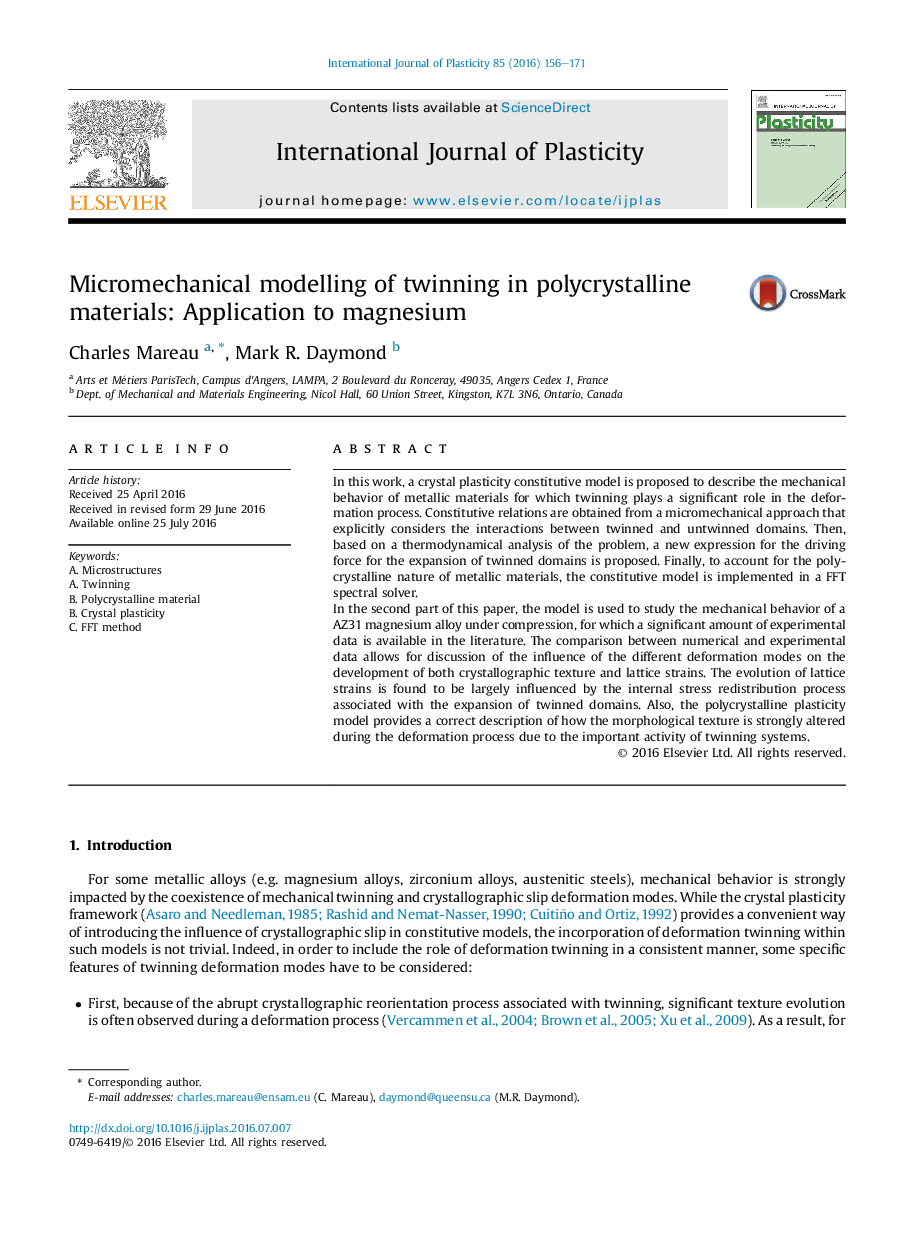| Article ID | Journal | Published Year | Pages | File Type |
|---|---|---|---|---|
| 784309 | International Journal of Plasticity | 2016 | 16 Pages |
•A crystal plasticity based constitutive model for twinning is proposed.•The interactions between twinned and untwinned domains are explicitly considered.•Constitutive relations are implemented within a FFT solver.•Applications concerning a AZ31 magnesium alloy are presented.•The experimental lattice strain and texture evolutions are generally well reproduced.
In this work, a crystal plasticity constitutive model is proposed to describe the mechanical behavior of metallic materials for which twinning plays a significant role in the deformation process. Constitutive relations are obtained from a micromechanical approach that explicitly considers the interactions between twinned and untwinned domains. Then, based on a thermodynamical analysis of the problem, a new expression for the driving force for the expansion of twinned domains is proposed. Finally, to account for the polycrystalline nature of metallic materials, the constitutive model is implemented in a FFT spectral solver.In the second part of this paper, the model is used to study the mechanical behavior of a AZ31 magnesium alloy under compression, for which a significant amount of experimental data is available in the literature. The comparison between numerical and experimental data allows for discussion of the influence of the different deformation modes on the development of both crystallographic texture and lattice strains. The evolution of lattice strains is found to be largely influenced by the internal stress redistribution process associated with the expansion of twinned domains. Also, the polycrystalline plasticity model provides a correct description of how the morphological texture is strongly altered during the deformation process due to the important activity of twinning systems.
